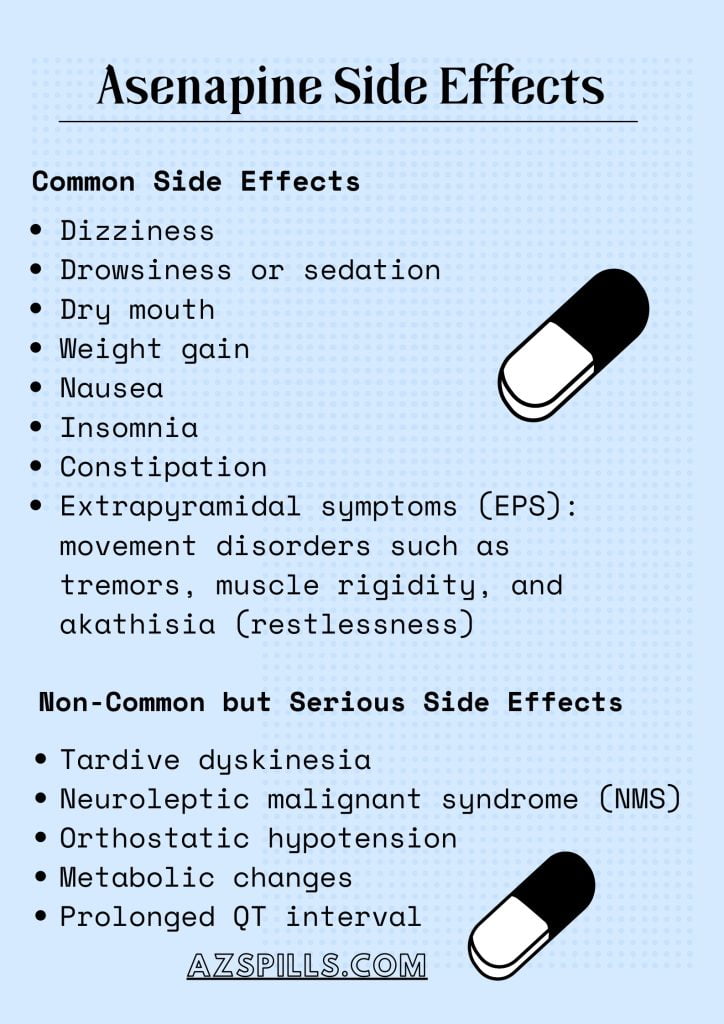Asenapine is an atypical antipsychotic medication used to treat schizophrenia and bipolar disorder. Like all medications, asenapine has potential side effects, and understanding these risks is essential for both healthcare providers and patients. This article will explore the available research on asenapine side effects and outline the most common risks.
Common Side Effects
Some of the most common side effects of asenapine include:
- Dizziness
- Drowsiness or sedation
- Dry mouth
- Weight gain
- Nausea
- Insomnia
- Constipation
- Extrapyramidal symptoms (EPS): movement disorders such as tremors, muscle rigidity, and akathisia (restlessness)
Less Common but Serious Side Effects
While rare, asenapine may also cause more severe side effects, including:
- Tardive dyskinesia: involuntary movements, often affecting the face, tongue, or limbs
- Neuroleptic malignant syndrome (NMS): a life-threatening reaction characterized by fever, muscle rigidity, altered mental status, and autonomic dysfunction
- Orthostatic hypotension: a drop in blood pressure when standing up, leading to dizziness and potential falls
- Seizures
- Metabolic changes: increased risk of high blood sugar, diabetes, and unhealthy cholesterol levels
- Prolonged QT interval: a heart rhythm disorder that can potentially lead to life-threatening arrhythmias

Assessing the Risks
When considering asenapine treatment, it’s essential to weigh the potential benefits against the possible side effects. Healthcare providers should take into account the patient’s medical history, other medications they may be taking, and any pre-existing conditions that could increase the risk of side effects. Patients should be closely monitored, especially during the initial stages of treatment, and any side effects should be promptly addressed.
Minimizing Side Effects
Healthcare providers can help minimize the risk of side effects by:
- Starting with a low dose of asenapine and gradually increasing if needed
- Regularly monitoring the patient’s weight, blood sugar, and lipid levels
- Encouraging healthy lifestyle habits, such as a balanced diet and regular exercise
- Discussing the potential side effects with the patient and involving them in the decision-making process
In conclusion, asenapine is an effective treatment option for schizophrenia and bipolar disorder, but it has potential side effects that must be considered. By carefully assessing the risks and implementing strategies to minimize side effects, healthcare providers can help ensure that patients receive the most appropriate and effective treatment.